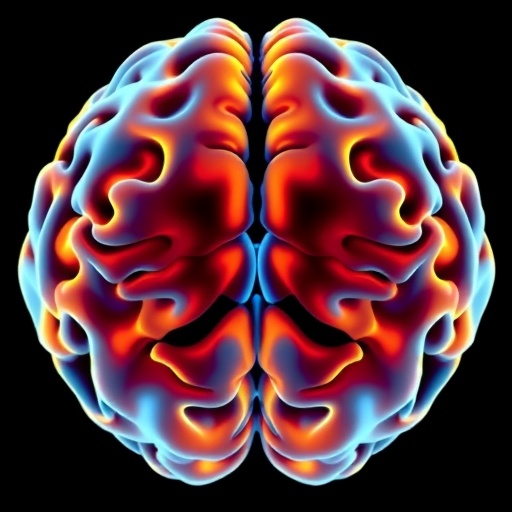New Insights into Schizophrenia Treatment: Subcortical Brain Changes Linked to Different Antipsychotics and Social Function
In a groundbreaking study published in BMC Psychiatry, researchers have unveiled distinct neuroanatomical differences in schizophrenia patients treated with two widely used antipsychotics, chlorpromazine (CPZ) and clozapine (CLZ). This investigation leverages advanced neuroimaging techniques to explore subcortical brain volume alterations and their potential link to social functioning, a critical aspect of schizophrenia’s clinical profile that profoundly affects patient quality of life.
Schizophrenia, a complex psychiatric disorder characterized by hallucinations, delusions, and cognitive impairments, often necessitates long-term antipsychotic treatment. While chlorpromazine, a first-generation antipsychotic, has been used for decades, clozapine, a second-generation drug, is noted for its superior efficacy in treatment-resistant cases. Despite extensive clinical use, the differential impact of these medications on brain structure remains poorly understood, particularly within subcortical regions implicated in cognition and social behavior.
The study employed high-resolution structural magnetic resonance imaging (MRI) at 3 Tesla strength to assess volumes of key subcortical structures in three groups: 24 schizophrenia patients on chlorpromazine, 24 on clozapine, and 24 healthy controls. The patient groups were rigorously matched, and clinical symptoms were quantified using the Positive and Negative Syndrome Scale (PANSS), while social function was assessed with the Social Functioning Scale (SSPI), enabling robust correlations between neuroanatomy and behavioral outcomes.
Intriguingly, the chlorpromazine group exhibited significantly increased volumes in the pallidum and putamen compared to both clozapine-treated patients and healthy controls. These subcortical regions, components of the basal ganglia, are crucial for motor control and reward processing, suggesting that chlorpromazine may induce volumetric changes through its pharmacodynamic profile, possibly linked to dopamine receptor antagonism. Conversely, clozapine-treated patients showed no such enlargement in these basal ganglia structures, highlighting a divergent neuroanatomical effect.
When analyzing the thalamus—a pivotal relay hub for cortical-subcortical communication—volumes were reduced in patient groups relative to controls, yet no significant differences emerged between the chlorpromazine and clozapine groups themselves. This reduction aligns with previous findings implicating thalamic atrophy in schizophrenia pathology. Notably, exploratory analyses hinted at a relationship between total thalamic volume and social functioning in the chlorpromazine group, although this correspondence did not withstand stringent statistical corrections for multiple comparisons.
What elevates this study is its predictive modeling indicating that the volume of the whole thalamus and bilateral thalamic regions significantly forecasted social function scores measured by SSPI. This finding accentuates the thalamus as a potential neuroimaging biomarker, offering hope for future personalized treatment strategies that consider individual brain morphology to optimize social outcomes.
These data collectively suggest that antipsychotic medications exert distinct influences on brain structures beyond symptom control, underscoring the complexity of schizophrenia neurobiology. The volumetric increases in pallidum and putamen under chlorpromazine treatment may relate to drug-induced neuroplasticity or compensatory hypertrophic mechanisms, which warrant further mechanistic studies integrating molecular and electrophysiological techniques.
Moreover, the influence of clozapine—or lack thereof—on these basal ganglia regions prompts questions regarding its unique receptor-binding profile and downstream effects on neuronal circuitry. Clozapine’s ability to ameliorate negative symptoms and treatment resistance without associated volumetric expansions raises the possibility that its therapeutic benefits derive from modulating network connectivity or synaptic efficacy rather than gross structural changes.
The diminished thalamic volume observed across both patient cohorts corroborates a growing body of research emphasizing thalamic dysfunction in schizophrenia, which may underpin deficits in sensory integration, attention, and social cognition. By linking thalamic morphology to social functioning, the study offers a compelling narrative wherein structural brain metrics might predict functional capacity—a crucial step for developing biomarkers that transcend symptomatic evaluation.
However, the study also highlights the challenges in biomarker validation, as the thalamic-social function correlation did not survive corrections for multiple comparisons, underscoring the necessity for larger sample sizes and longitudinal designs to confirm these associations. Future research should aim to dissect causality, including whether these volumetric changes are a consequence of long-term antipsychotic exposure, illness progression, or intrinsic neurodevelopmental abnormalities.
Importantly, this research advances the paradigm of psychiatry towards integrating neuroimaging biomarkers for treatment monitoring, moving beyond symptomatic assessments. Understanding how different pharmacological agents modulate brain structure provides valuable insights into their mechanisms of action and potential side effects, possibly informing tailored therapeutic interventions that maximize efficacy while minimizing adverse outcomes.
In conclusion, the delineation of distinct subcortical volumetric profiles linked to chlorpromazine and clozapine treatments marks a significant stride in schizophrenia research. The emphasis on thalamic volume as a neuroimaging correlate of social functioning opens avenues for biomarker-driven approaches that could transform patient care. As neuroscience and psychiatry continue converging through such sophisticated studies, the vision of personalized medicine for complex psychiatric disorders draws closer to reality.
Subject of Research: Neuroanatomical alterations and social function correlations in schizophrenia patients treated with chlorpromazine versus clozapine.
Article Title: Subcortical volume alteration and correlation with social function under chlorpromazine versus clozapine treatment in schizophrenia
Article References:
Gao, J., Jia, J., Jiang, Q. et al. Subcortical volume alteration and correlation with social function under chlorpromazine versus clozapine treatment in schizophrenia. BMC Psychiatry 25, 887 (2025). https://doi.org/10.1186/s12888-025-07309-x
Image Credits: AI Generated
DOI: https://doi.org/10.1186/s12888-025-07309-x




